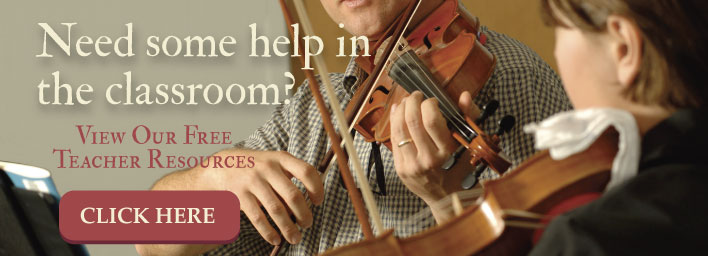Chamber Playing Versus Solo Playing: What Will Inspire A Young Student Most?

While practicing solo can be - and will be - beneficial to a point, group activities and chamber music settings are the best way to keep beginning and intermediate music students inspired.
Leverage the appeal of awareness, healthy competition, pride, responsibility and the pleasure of hearing how individual parts create a more beautiful whole - all of these features keep students more attentive and dedicated to their instrument than solo playing ever could.
Chamber Playing Makes Music Come Alive for Young Students
Music doesn't happen in a vacuum. It requires space, movement, energy, sound production, sound absorption, giving, receiving, flow, time, rhythm, etc. The more you subtract from the equation, the less exciting and inspiring it is to put in the time and effort required to improve your musicianship.
Here are some of the ways chamber playing - and chamber-style practicing - keep students motivated.
The group who practices together stays together
Committing to running three times per week is one thing, committing to running three times a week with a partner or two is another. All of a sudden, there's an onus to show up on time, participate and cooperate with the group. Chamber playing isn't all that different.
When students form cohesive groups, and become accustomed to practicing together, they engage in more committed ways because their participation matters to everyone else.
Safety in numbers
Standing solo in front of a teacher, doing warm-ups, scales, learning new techniques, and working on the newest piece is intimidating for many students - especially those who are new to playing an instrument or who are shyer by nature.
Working as a small group insulates them from the spotlight so they can practice/play with more relaxed ease. As a music educator, you don't have to worry you'll be lose touch with individual student progress. While "snafus" are insulated to a point, any glaring lack of practice will still show up.
There's many ways to learn music (hint: it's not all about the instrument)
Playing music is like having a neural superpower. The amount of things you're required to do all at once - count, count in time, listen to yourself, listen to others around you, move fingers, hold your body in a certain position, remember notes, pay attention to the instructor, read music, etc., – are pretty impressive. It's a wonder any of us can play music at all.
As long-time musicians, we often forget what it was like in our early stages to keep it all together. And, since many of us were good at it from the get-go, it requires a tremendous amount of empathy to imagine what it's like to be new at something, and continue trying hard at something, that we find hard to do (and - gasp - we might not even like to do at all).
This brings us back to the subheading - it's not all about the instrument. The best thing a music educator with new-ish students can do is have their kids put the instruments down and focus on music skill-sets one at a time, in small groups - solfège and ear training, rhythm games, call-and-response, singing, stepping and jumping on certain beats/rests, breath work - all go a long way to improve what happens once instruments are picked up with a more ingrained understanding of what this is all about.
Show them what rests are for (or why the right notes matter)
Playing solo - or in a large group - may hide the value of rests. The same can be true of playing the correct note, "what does it matter if I play the wrong note if 10 other violinists are playing the right ones?" If this attitude takes hold, it causes students to doubt the importance of their role as a musician in your orchestra or band.
Put that same musician in a duet, a trio or a chamber group with only one or two people on the same part, and now those rests and correct notes make glaring sense. The smaller the group the better, because the more opportunity students have to hear themselves within the group the more they'll work to remain focused.
Offer the chance to perform in small groups
You know what's more exciting than seeing your child play in a large-group format? Getting to hear him/her play in a small group or two. Allowing students to perform in small chamber groups - for both school finals, the school concert or your music studio's recital - will change the way students experience performing.
Performing in a group reduces stage fright, encourages them to do their best to support the group and makes performances more exciting and engaging. Do yourself and your students a favor – shake up the "practice solo" or "large group" formats and swap them for chamber playing scenarios. Students will improve faster and remain more enthusiastic about their musicianship while doing it.


